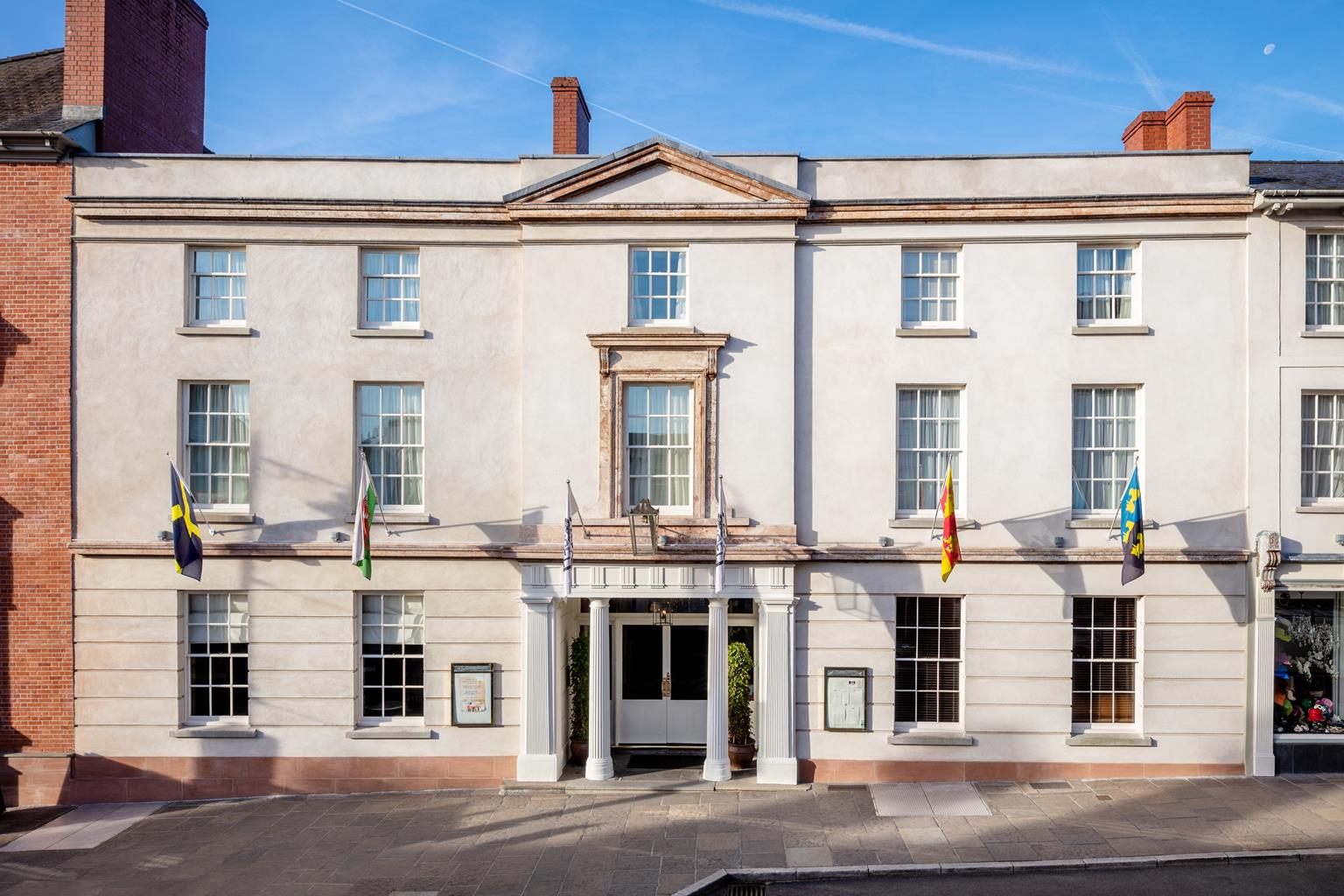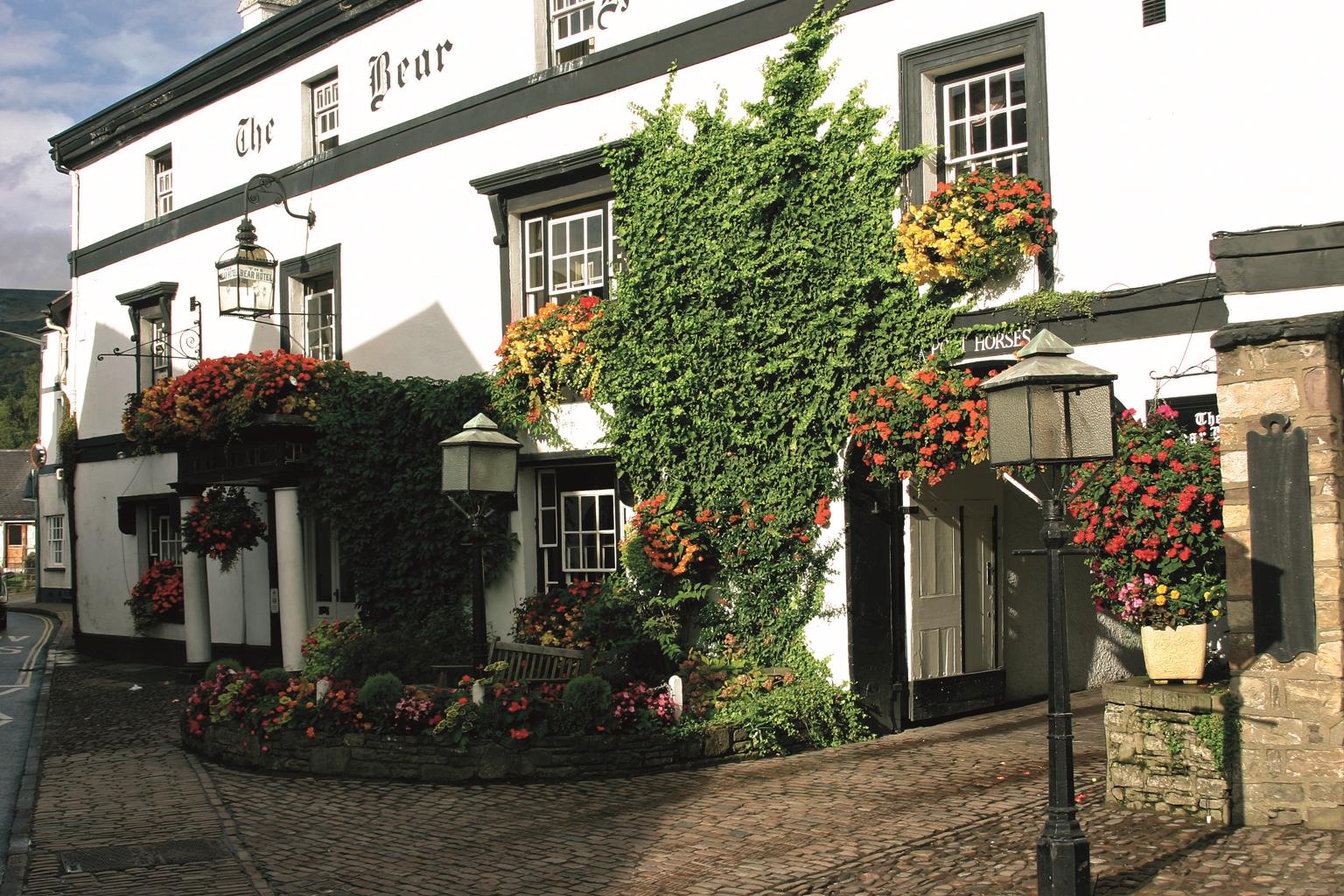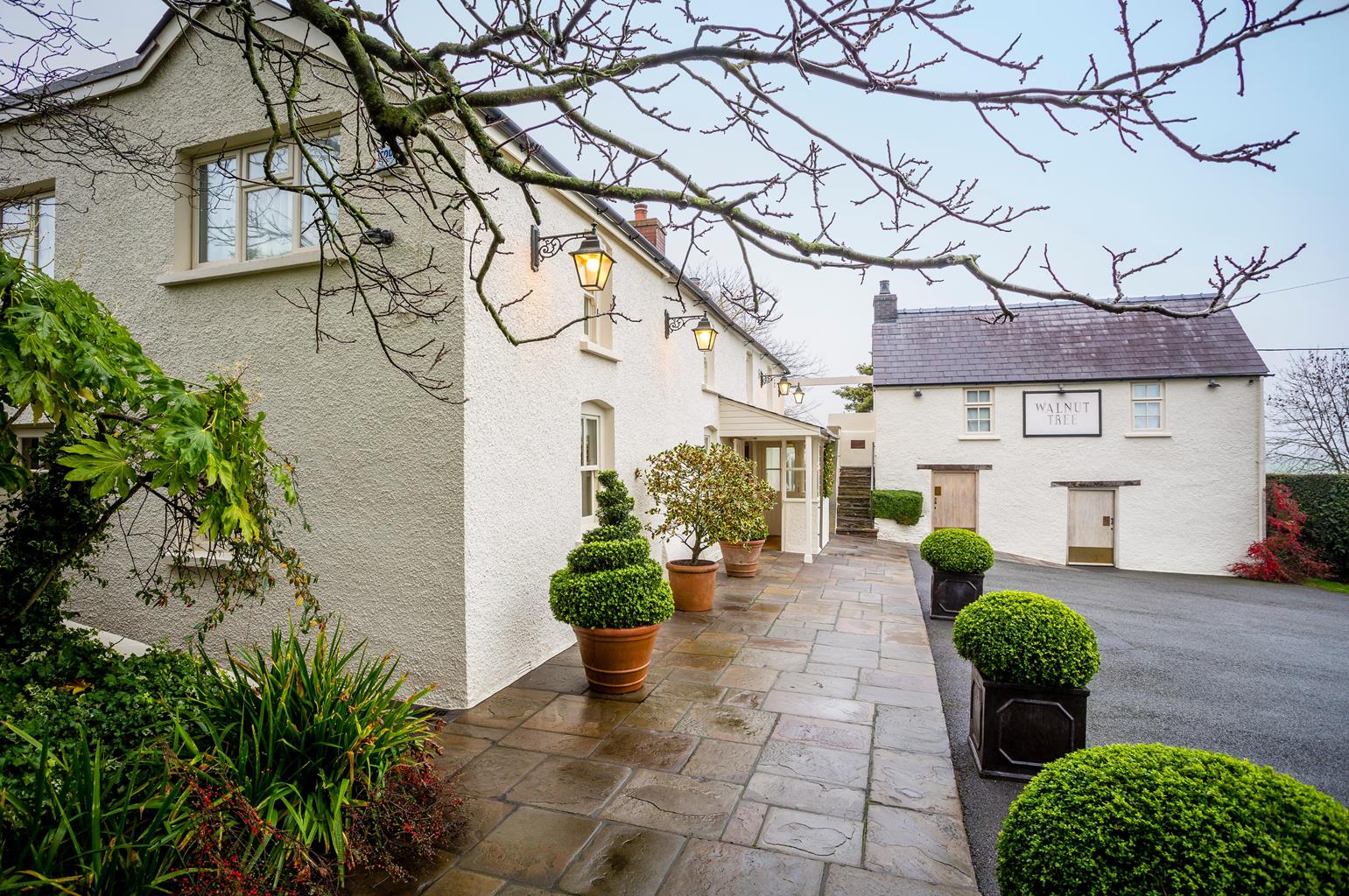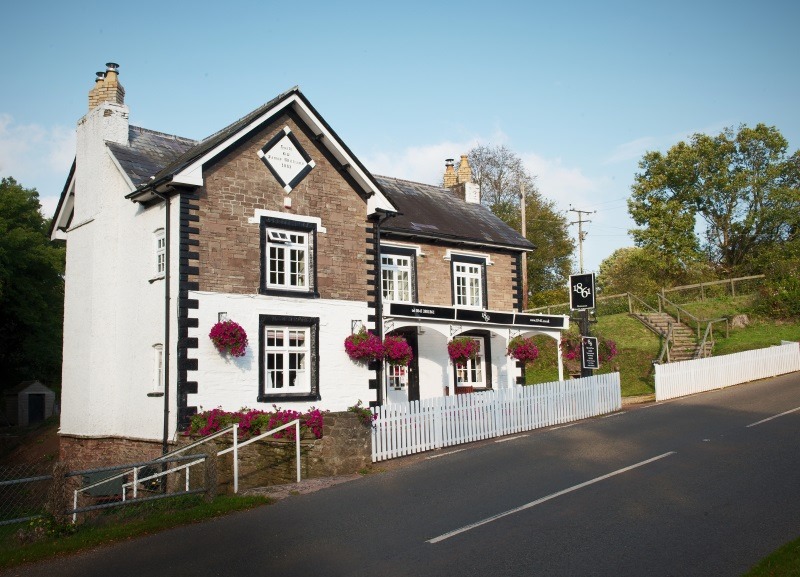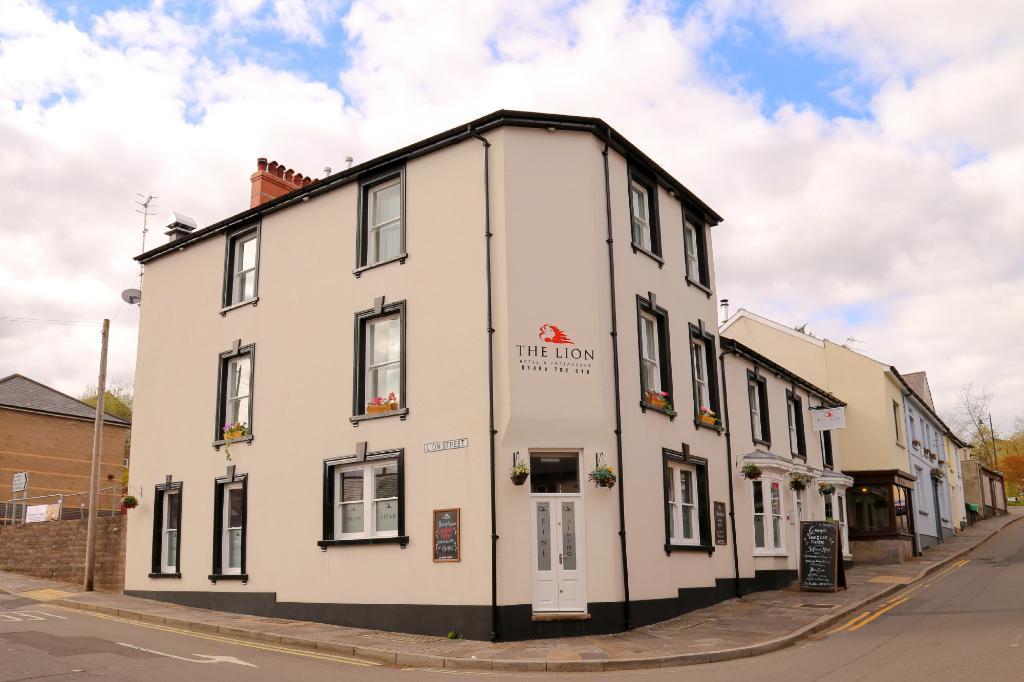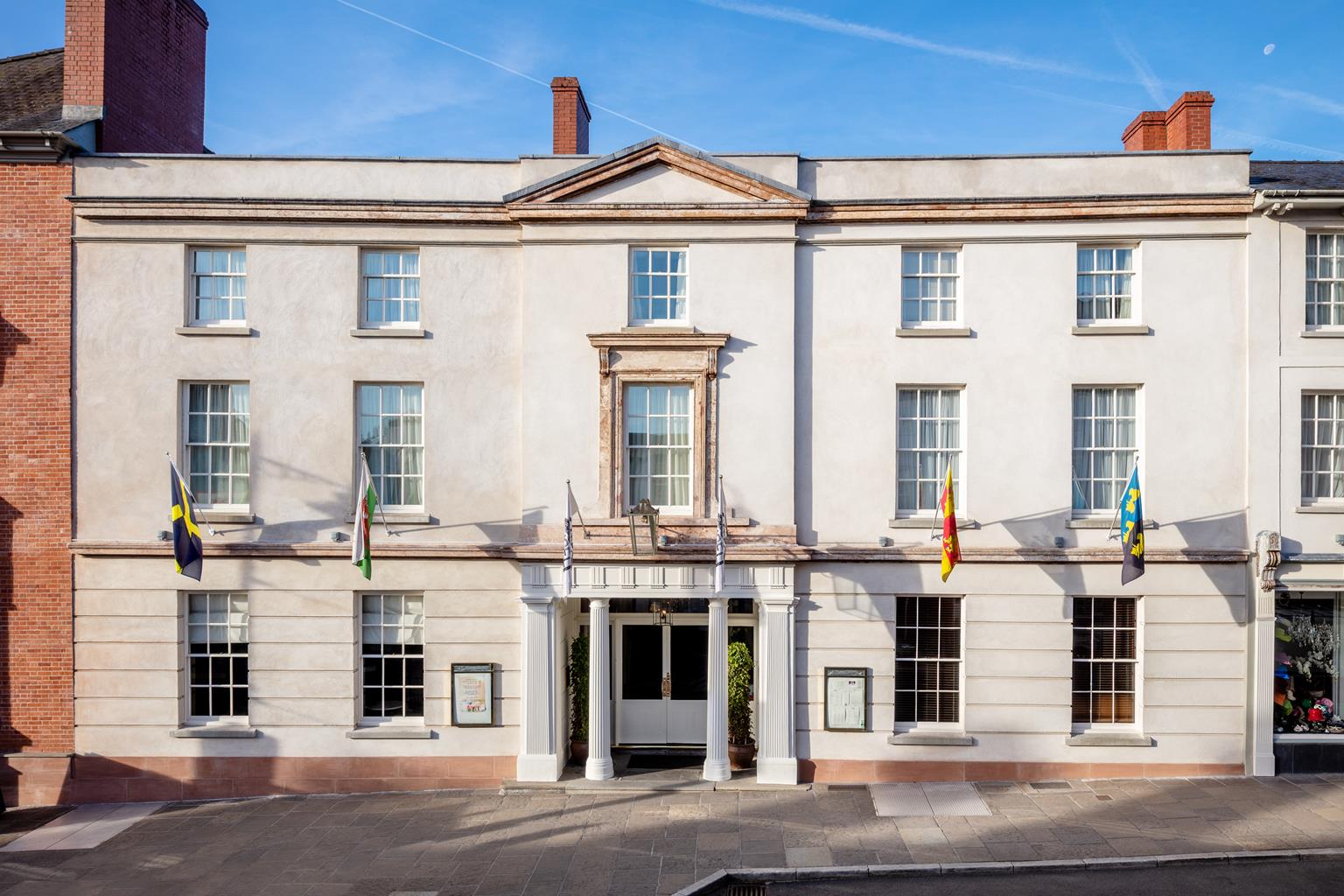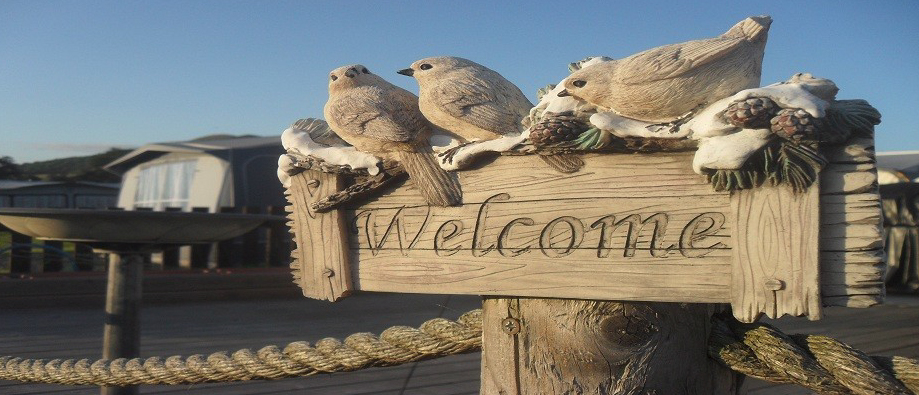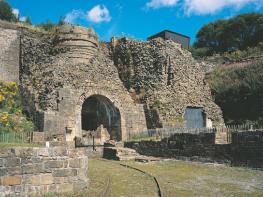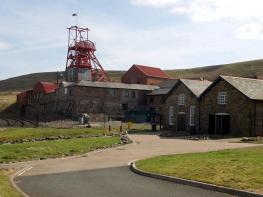The Lion is set in the beautiful village of Blaenavon, part of a UNESCO World Heritage Site, and…
Abergavenny and The Blorenge

A short sortie on to the hill that towers above the Beacons' eastern gateway
3 miles (4.8kms)
About the walk
There’s no easier peak to climb in the Bannau Brycheiniog (Brecon Beacons) National Park, but there are also few that occupy such a commanding position. The Blorenge – the English-sounding name probably derives from ‘blue ridge’ – towers menacingly above the cramped streets of Abergavenny, with the main sweep of the Black Mountains leading away to the north. The mountain actually dominates a small finger of the National Park that points southwards from Abergavenny to Pontypool. It’s unique in being the only real peak south of the A465 Heads of the Valleys road. It also marks a watershed between the protected mountain scenery that makes up the bulk of the National Park and the ravaged industrial landscape that forms the southern boundary. Typically, its northern flanks boast a Bronze Age burial cairn and the ground above the escarpment is littered with grass-covered mounds, a remnant of past quarrying. The stone was then transported away on the canals and railways.
Commonly seen as the eastern gateway to the park, even if it sits just outside the boundary, Abergavenny is a thriving market town that owes its success to weaving, tanning and farming. It feels a thousand miles away from the industrial valleys that nudge against its limits from the south. The name, which in Welsh means the confluence of the River Venny, refers to its position at the junction of the River Fenni and the River Usk, but oddly, in Welsh, it’s known simply as Y Fenni – the name of the river.
Abergavenny sprang up around a Norman castle that was built to aid efforts by the invaders to rid the area of the Celts. The Welsh proved far more resilient than the Normans had expected and in the end, William de Braose, the lord of the town at the time, resorted to dirty tactics to achieve his aims, such as inviting the Welsh leaders to dinner and then murdering them while they were unarmed. The castle now acts as a museum with some interesting displays of the town’s history. Another of Abergavenny’s claims to fame is the fact that during World War II, Hitler’s deputy, Rudolf Hess, was imprisoned here after his plane crashed in Scotland.
Only 5 miles (8km) south of Abergavenny, but culturally and spiritually a completely different world, Blaenavon tells the full, uncut story of industrial expansion in South Wales. With iron ore, limestone, coal and water all found in local abundance, smelting began here as early as the 1500s, but the town, and the huge iron works that came to dominate it, didn’t really get going until the Industrial Revolution of the late 18th century. The colliery, now known as the Big Pit Coal Museum, was founded a full century later than the iron works but closed as a colliery in 1980. It has been immaculately preserved and well organised to give visitors a meaningful insight into the industry itself, the conditions that the people endured and the culture that grew up around them. As well as the engine houses, workshops and the miners’ baths, a tour, usually accompanied by an ex-miner as a guide, includes donning a miner’s helmet to descend one of the shafts to the actual coalfaces. Blaenavon is considered an exceptional example of industrial South Wales and it was declared a UNESCO World Heritage Site in 2000.
Walk directions
From Carn-y-gorfydd Roadside Rest, walk downhill for 500yds (457m) and bear left, through a green barrier, on to a grassy track.
This leads easily uphill, through a tangle of bracken, eventually allowing great views over the Usk Valley towards the outlying peak of Ysgyryd Fawr.
As the path levels, you’ll pass a small locked hut. Continue along the escarpment edge, on one of a series of terraces that contour above the steep escarpment, and enjoy the views over Abergavenny and the Black Mountains. The rough ground was formed by the quarrying of stone.
Return to the hut and bear right, on to a faint grassy track that crosses flat ground and a small boggy patch before climbing slightly and becoming stony. Away to the right, you should be able to make out the pronounced hump of a Bronze Age burial cairn. The path now leads easily to the trig point and the huge cairn that marks the summit.
Continue in the same direction, drop down past an impressive limestone out-crop and towards the huge masts on the skyline. You should also be able to see the extensive spoil heaps on the flanks of Gilwern Hill, directly ahead. A few hundred yards from the trig point, look out for the tentative beginnings of a grey gravel path (lined, towards the end, with ‘Heather and Heritage’ waymarkers) that will take you all the way to the car park.
At the masts, you’ll cross the Foxhunter car park to meet the road where you turn left and continue easily downhill, for 600yds (549m), back to the start.
Additional information
Clear tracks over open mountainside, quiet lane
Rugged mountain scenery, huge views over Usk Valley
Care needed near livestock and on road
OS Explorer OL13 Brecon Beacons National Park
Small car park at Carn-y-gorfydd
None on route
WALKING IN SAFETY
Read our tips to look after yourself and the environment when following this walk.
Find out more
Also in the area
About the area
Discover Monmouthshire
In their bid to control the borderlands of Monmouthshire – also known as the Marches – the Normans built a triangle of castles: Grosmont, Skenfrith and White. At first, they were simple wooden structures strengthened by earthworks, but when the lively Welsh refused to stop attacking them, it was decided more permanent fortresses were needed. All three are worth a visit and the views from the battlements at White Castle over the surrounding countryside to the Black Mountains are stunning, as is all the scenery in this area – consisting of a patchwork of low hills, hidden valleys, fields criss-crossed with hedgerows and small belts of woodland.
Monmouth itself makes a great base to explore the beautiful Wye Valley, as well as being known as the home of Rockfield Studios, where Queen recorded Bohemian Rhapsody in 1975. The largest town in the county, Abergavenny is creating a name for itself as the foodie capital of the Usk Valley, and has held a weekly cattle market on the same site since 1863. Its location just six miles from the English border means it’s often described as the ‘gateway to Wales’.
Nearby stays
Restaurants and Pubs
Nearby experiences
Recommended things to do
Why choose Rated Trips?
Your trusted guide to rated places across the UK
The best coverage
Discover more than 15,000 professionally rated places to stay, eat and visit from across the UK and Ireland.
Quality assured
Choose a place to stay safe in the knowledge that it has been expertly assessed by trained assessors.
Plan your next trip
Search by location or the type of place you're visiting to find your next ideal holiday experience.
Travel inspiration
Read our articles, city guides and recommended things to do for inspiration. We're here to help you explore the UK.

